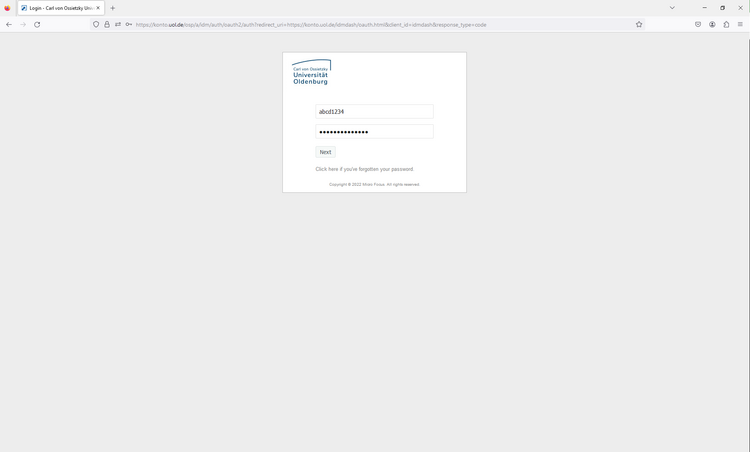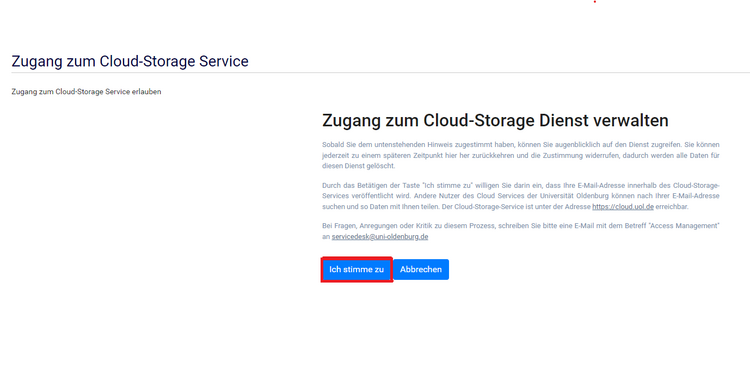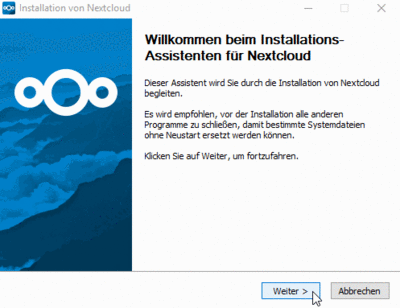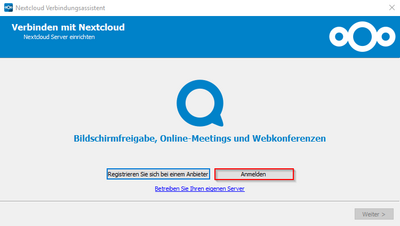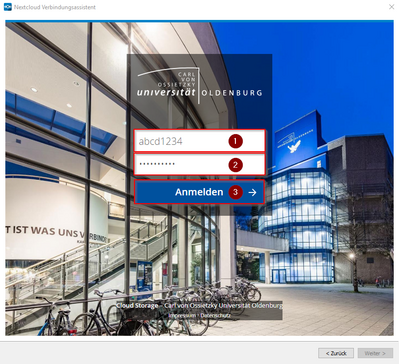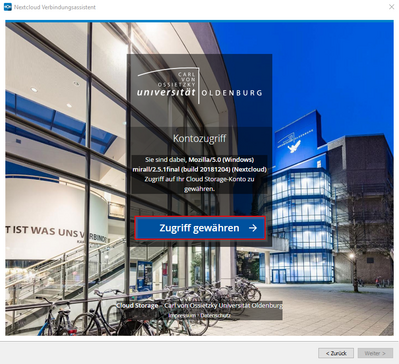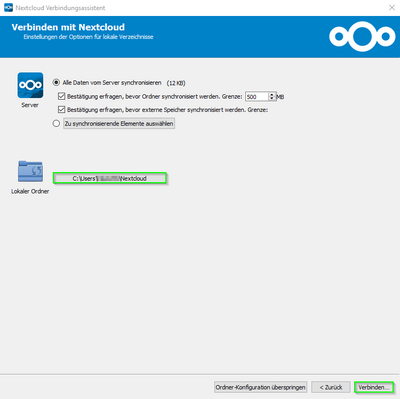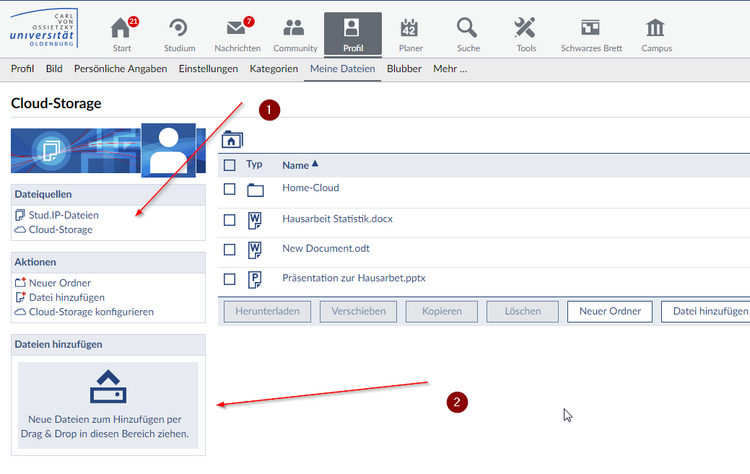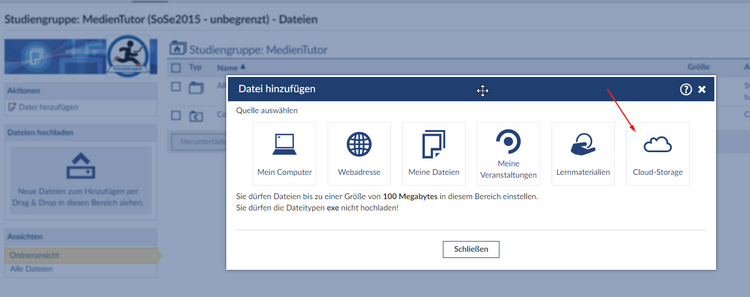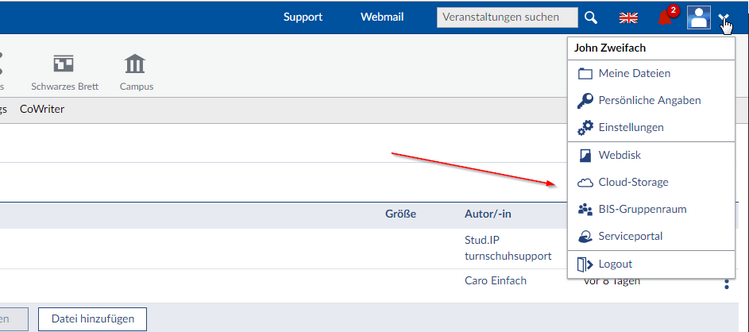The following chapter introduces you to the use of the Cloud-Storage service.
Web Interface
Cloud-Storage has a web interface through which users can access their data and share it with other users.
Registration
The web interface can be reached at https://cloud.uol.de .
Registration takes place with your user account.
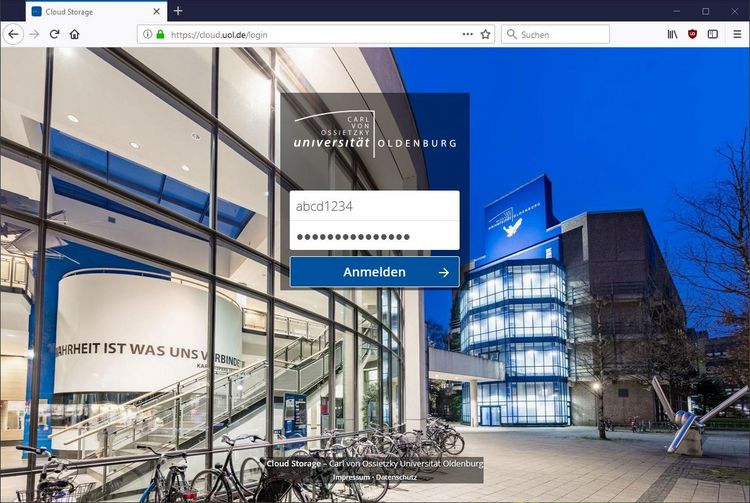
After the first login, the ownCloud web interface welcomes you with download links to the sync clients.
Confirm the welcome message by clicking on the cross at the top right.
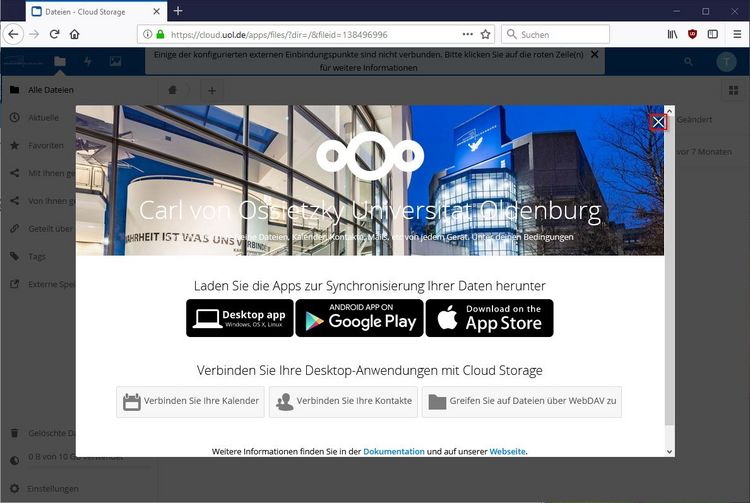
Accessing files
You are in the overview of files and folders.
Clicking on a file name usually triggers the download of this file. Clicking on the name of a folder changes to that folder.
By ticking the box at the beginning of a line, several files can be selected and downloaded or deleted together.
About the symbol  the share function for a folder or a file can be called up.
the share function for a folder or a file can be called up.
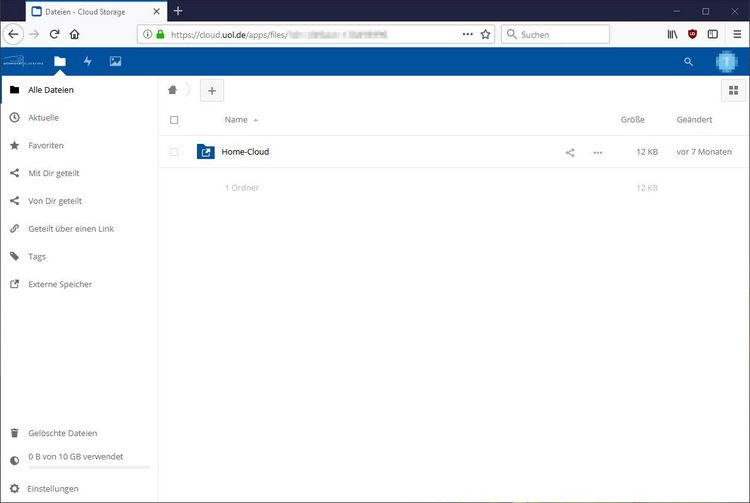
A click on leads to the context menu of a file or folder. The content of the context menu differs between folders and files. Different options are also possible between different file types.
Create a folder
With the point + new folders or files can be created or uploaded.

Upload
Click on the symbol  opens a dialog for uploading new files.
opens a dialog for uploading new files.
You can also upload files by dragging them onto the Cloud-Storage web interface ("Drag & Drop"). Modern browsers also support uploads of directories and their content.
Delete
Files or folders can be deleted using the icon  below
below  .
.
You can also delete multiple files or folders by marking them with a tick and then selecting "Delete  "in the column heading.
"in the column heading.
Editing of documents, tables and presentations
Cloud-Storage allows you to edit documents, spreadsheets and presentations directly in the web browser. Simultaneous editing with several people is also possible.
Share
You can share files or directories via button  with other users.
with other users.
There are three different ways that data can be shared with other people:
 direct sharing with members of the University of Oldenburg
direct sharing with members of the University of Oldenburg Share using Federated Cloud ID
Share using Federated Cloud ID Share via link in an email with external users
Share via link in an email with external users
When using the share function, pay attention to the symbols that appear at the end of the respective line. This indicates the type of sharing used.
Direct sharing with members of the University of Oldenburg 
Directly shared files or folders are displayed in the cloud area of the selected users. Files or folders that are shared in this way can be edited directly by the selected users within the scope of the assigned authorizations.
Start typing someone’s email address in the Name, Federated Cloud ID, Email ... field. If the input is known to the system, a list of suggestions will be displayed after a few moments. A few characters of the first name are often sufficient. Use the system's suggestion list without hesitation, because the system only knows the user's primary email address. Entering an alias email address, for example with the ending ... @ uol.de , leads inevitably to the sending of a link instead of the desired direct sharing. After entering the @ - plus another character, the system suggests sharing using a Federated Cloud ID or email. As long as no @ sign has been entered, the system searches the internal user database and the content is shared directly with the users.
If no suitable proposal is made, the user account you are looking for may not have been activated for the service. Please speak to the person and refer to the necessary activation of the user account.
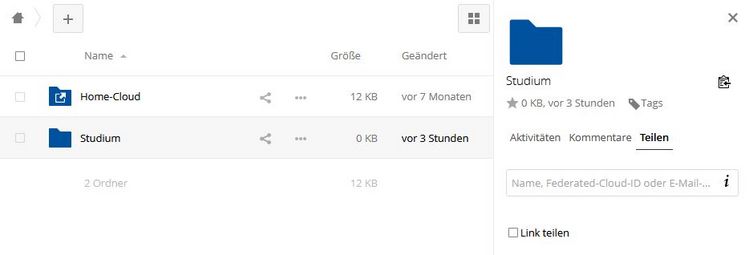
If the added university user is also allowed to upload files to your directory, move the mouse pointer over their email address and check the box "can edit".
To the right of "can edit" is an arrow pointing downwards. This opens up further options for assigning rights. You can specify here whether the user can update or delete this file. At this point, shared folders still offer the option to create . It is also possible to set an expiry date for this share for each participant.

With "  Revoke approval "access can be withdrawn again for individual users.
Revoke approval "access can be withdrawn again for individual users.
Share using Federated Cloud ID 
With a Federated Cloud ID, you can share data with users of other cloud devices that support this protocol. The software Nextcloud or ownCloud is usually also used in the other instances. In order to be able to share data with other people via this function, the person must provide you with their specific Federated Cloud ID.
Share via link in an email with external users 
If the user is not a member of the University of Oldenburg, you can share files and folders using the "Share via a link" function. First check the box here.
The link via which the file can later be accessed is initially displayed in the field below "Share via a link". You can copy this link and paste it into an individual email.


The "read-only" option only allows the visitor of the link to download the shared files and directories.
The option "Allow uploading and editing" is only available for directories shared by link. Here you allow other users to upload files to your folder. If necessary, you can assign the "Edit" right for files.
The option "Store files (upload only)" for folders shared via link allows you to only receive files via the link. Link users cannot see the contents of the folder.
With the "Password protection" option, you can define a password that must be entered before using the link.
You can set an expiration date until when the release can be used by the added users.
Shared folders of other people
Folders that other people have shared with you usually appear at the top level in your area.
Recover deleted files
The "Deleted files" button provides a recycle bin function for files. All files that you have deleted are moved here.
This trash is self-managing. As soon as the volume of the files you have deleted reaches 50% of your storage limit, the oldest files in the trash are automatically deleted.
Files are also automatically deleted when your storage space runs out.
After a retention period of 30 days, files from this recycle bin are also automatically deleted.
Activity
Under the menu item "Activities" you will find a change history about your Cloud-Storage. For example, you can see when you edited which files.
pictures
Images uploaded to Cloud-Storage are summarized under the item "Images". In the full view, a slide show can be started by clicking the arrow at the bottom right.
Settings
Clicking on your email address in the top right corner opens a dialog with the functions "Settings", "Help" and "Unsubscribe".
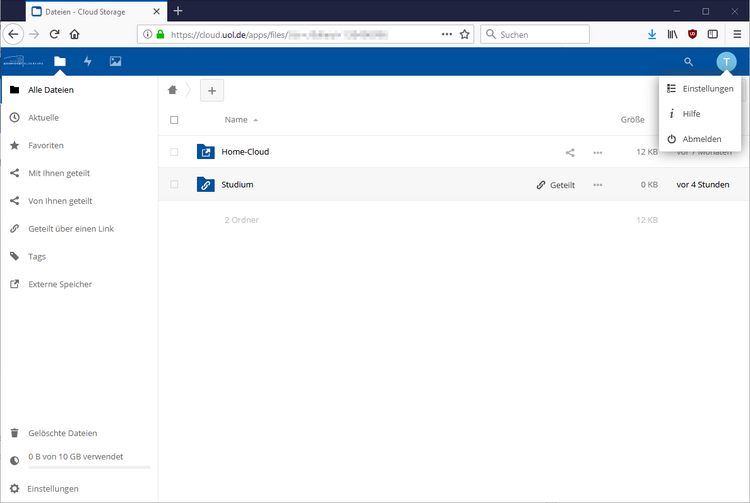
Personal information
Here you will first find an overview of the used storage space. You can personalize the service with your own profile picture. Your profile picture appears under the "Activity" and "Documents" items.
Security
Here you can see the current sessions of your user account. You can also assign app passwords. App passwords are randomly generated passwords that you can save together with your user name in other applications, e.g. the sync client on the desktop PC or the app on the smartphone. This means that these other applications do not have your real password.
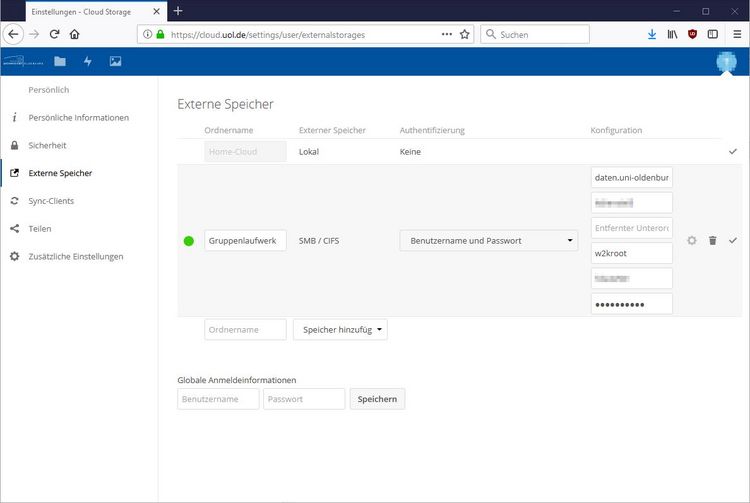
External storage
Additional data storage can be integrated into Cloud-Storage service under "External storage". The procedure for integrating external storage is described on the page Integrate group drive, HPC storage or L drive .

